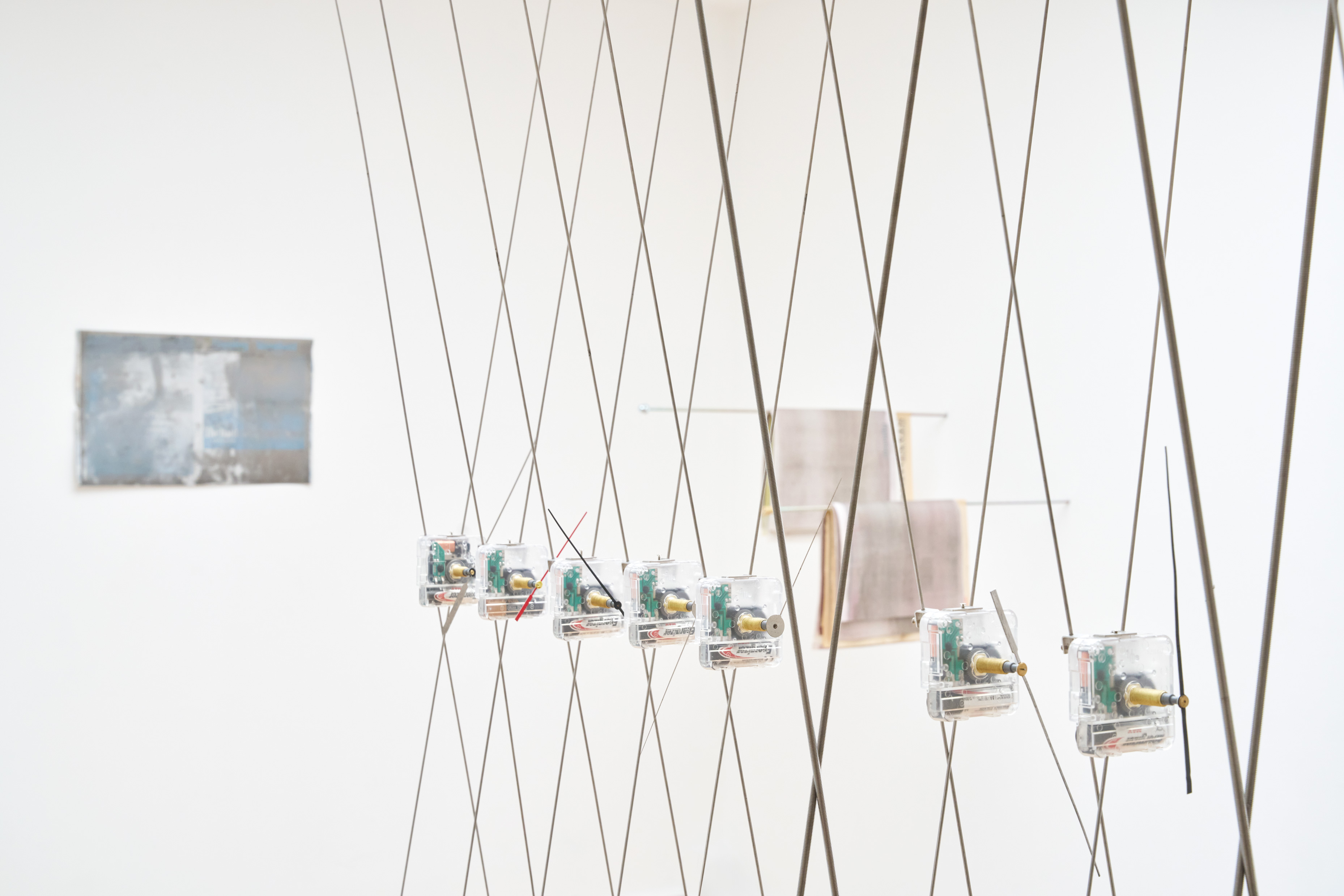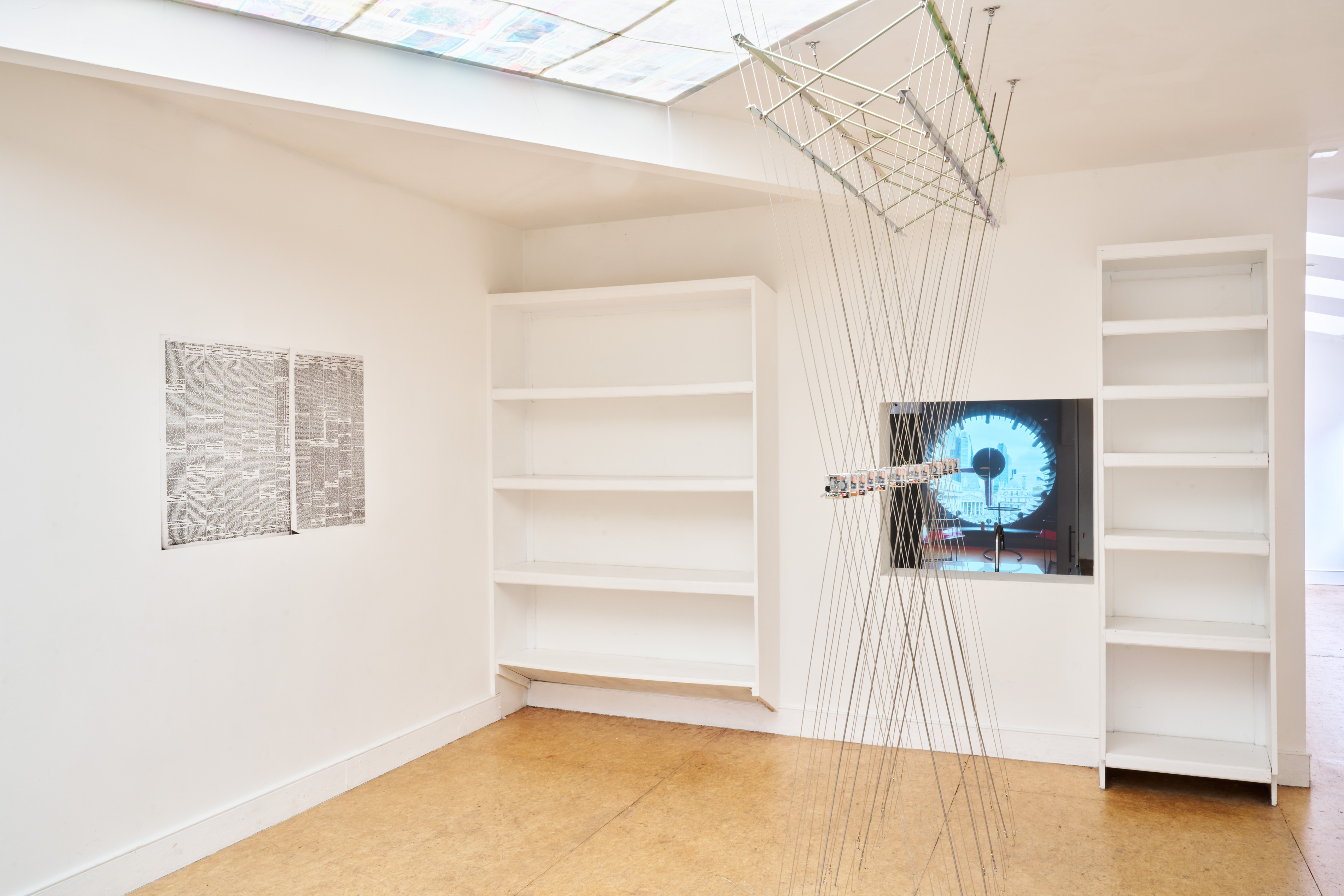ELOISE HAWSER:
Civil Twilight
27 June–3 August 2025
Preview: Thursday 26 June 6–9pm
In-conversation with the artist: Thursday 17 July 6.30pm Free, booking essential to book please email [email protected]
Flat Time House and Knotenpunkt are pleased to present an ambitious solo exhibition by UK based artist Eloise Hawser. Following a 6-month residency supported by Knotenpunkt, Hawser has developed a new body of work responding to the context of Flat Time House. Drawing from her longstanding interest in the shifting materiality of modern life, Civil Twilight explores media in transition, specifically newspapers, and how they’re encountered in public space.

For this project Hawser documented the final day of distribution of London’s Evening Standard. After nearly 200 years of daily publication, the last daily format edition was distributed on 19 September 2024 with minimal fanfare. Presented for the first time, the collected interviews and video documentation record the otherwise unremarked disappearance of social and material structures within a sculptural installation.
Newspapers and the associated structures that support their production, distribution and disposal are an important interest of Hawser. Her sculptural practice investigates the physicality of print, integrating collected newspapers and newsprint lithographic printing plates into the work, as well as the social context of the medium through collected stories from Fleet Street’s former printers and distributors. Whilst on residence, Eloise Hawser developed a major commission for Barbara Steveni’s retrospective at Modern Art Oxford, working with Steveni’s extensive newspaper collection. Civil Twilight continues her research in this territory with the newspaper presenting both a socio-political backdrop and representation of the continuous and irreversible nature of the progression of time.
Amongst the changing status of print media, the hand-to-hand act of spreading news becomes a point of tension between the impersonal flow of the city and the personal stories of the distributors. One distributor remarked their favourite pitch, outside no. 1 Poultry, offered a steady flow of people to chat to. The end of the paper marks not just the loss of a publication, but the quiet erasure of relationships and rhythms built around it, from the business of the team as they restock to their conversations with regular customers.
This footage sits alongside video work with the public clock as its subject. Many are still mounted above street level, though few still work. Like the newspaper, these clocks once played a role in regulating public life: visible, shared markers of time. At Flat Time House, Hawser has assembled a sculptural work from clock mechanisms, known as movements, featuring only their hands and gears. The audible ticking of the sculpture is a reminder of the mechanical, material motion that once structured the day. This is a motion echoed in the steady routines of newspaper production and distribution.
Eloise’s residency at Flat Time House also resulted in a new commission presented as part of I Find Myself (1 March–8 June 2025), a Barbara Steveni retrospective at Modern Art Oxford, supported by Knotenpunkt.
-61.jpg)
I Find Myself installation view featuring Eloise Hawser’s commission, 2025. Photography by Rob Harris © Modern Art Oxford
Eloise Hawser (b. London 1985) has exhibited extensively in the UK and internationally, and was awarded the 2023 David and Yuko Juda Art Foundation grant. With support from Arts Council UK and Knotenpunkt, her ongoing project, Press Tracker, was shown at the London Open at Whitechapel Gallery in 2022. The Tipping Hall was presented at the Istanbul Biennial in 2019 before being exhibited at the Montpellier Contemporain in 2020. Her first UK solo institutional exhibition, Lives on Wire, was presented by the ICA in 2015, followed by a major exhibition at Somerset House titled By the Deep, By the Mark three years later. Group exhibitions include History of Nothing (White Cube, 2016), Weight of Data (Tate Britain, 2015), and Surround Audience (New Museum, New York, 2015). Her work often involves public and collective engagement, such as her 800,000 tonnes series of waste management tours with Focal Point Gallery (Southend, 2019) and her night-walk A New Way to Set (Somerset House, 2019).
.webp)
Supported by Knotenpunkt

Additional support from Kunstraum
Additional support from Arcade and South London Gallery
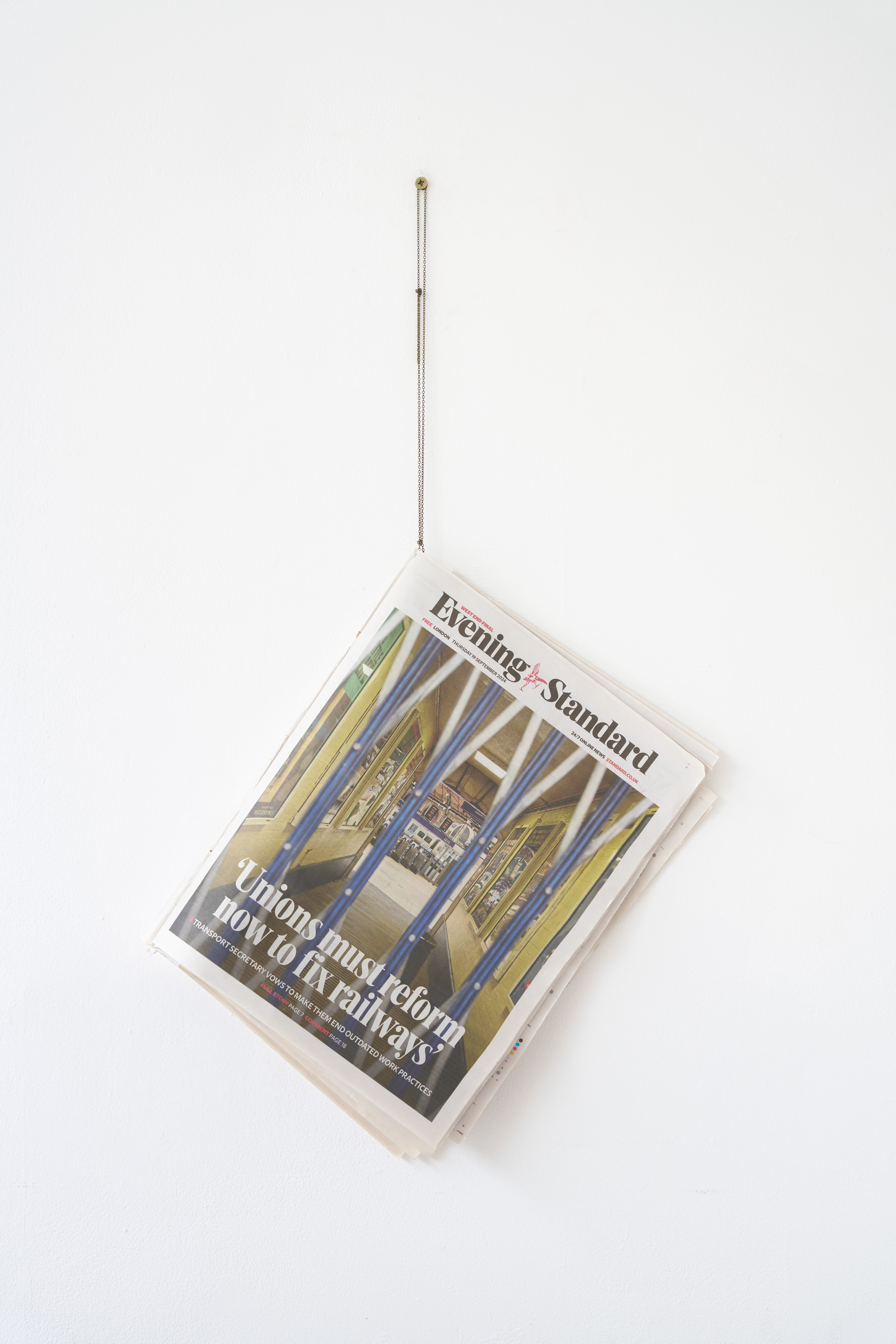
Eloise Hawser, 19-09-2024, Newspaper. 2025. Photo : Peter Otto
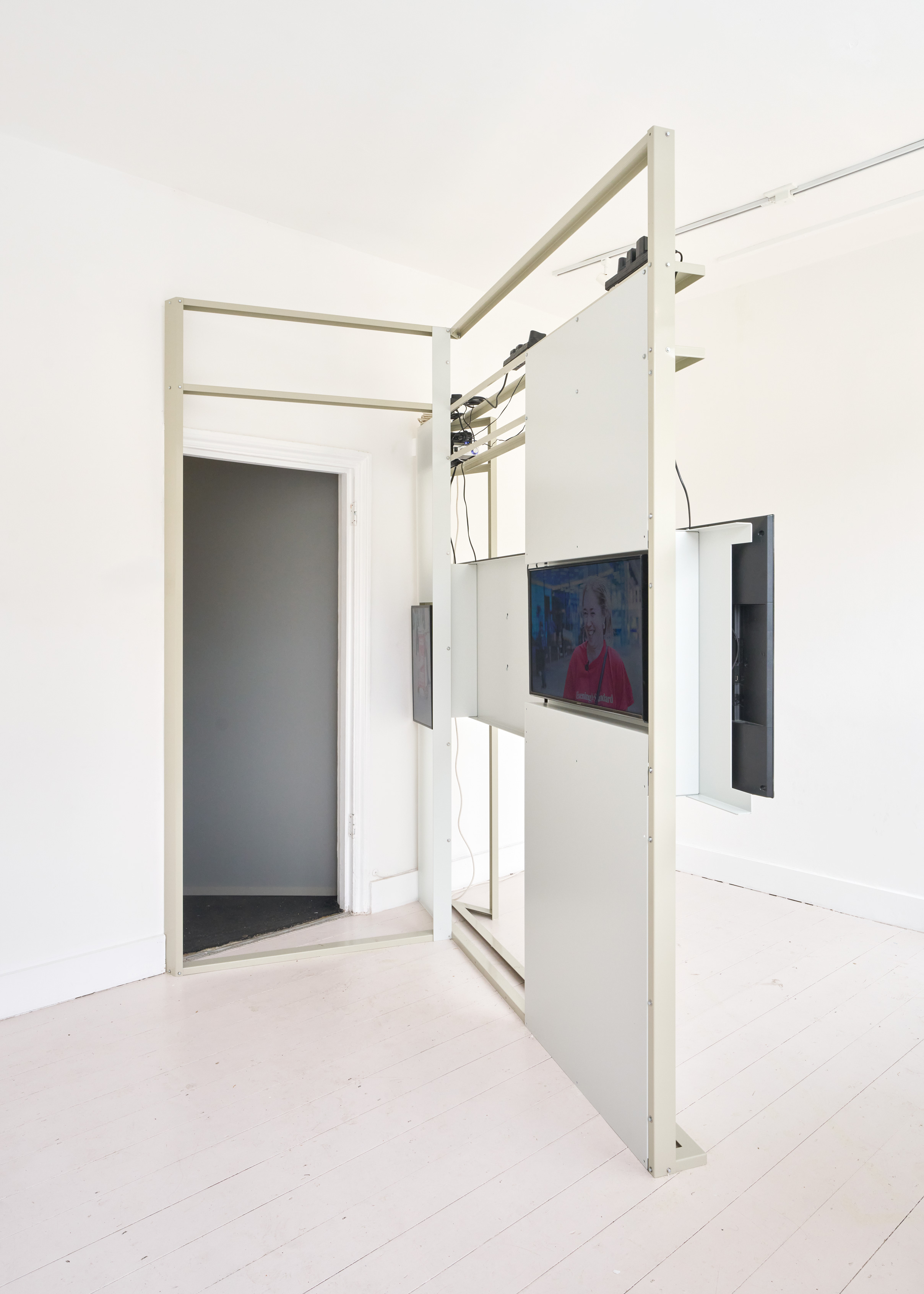
Eloise Hawser, Public Hands, Site-specific video installation, steel structure with looped video. 2025. Photo : Peter Otto
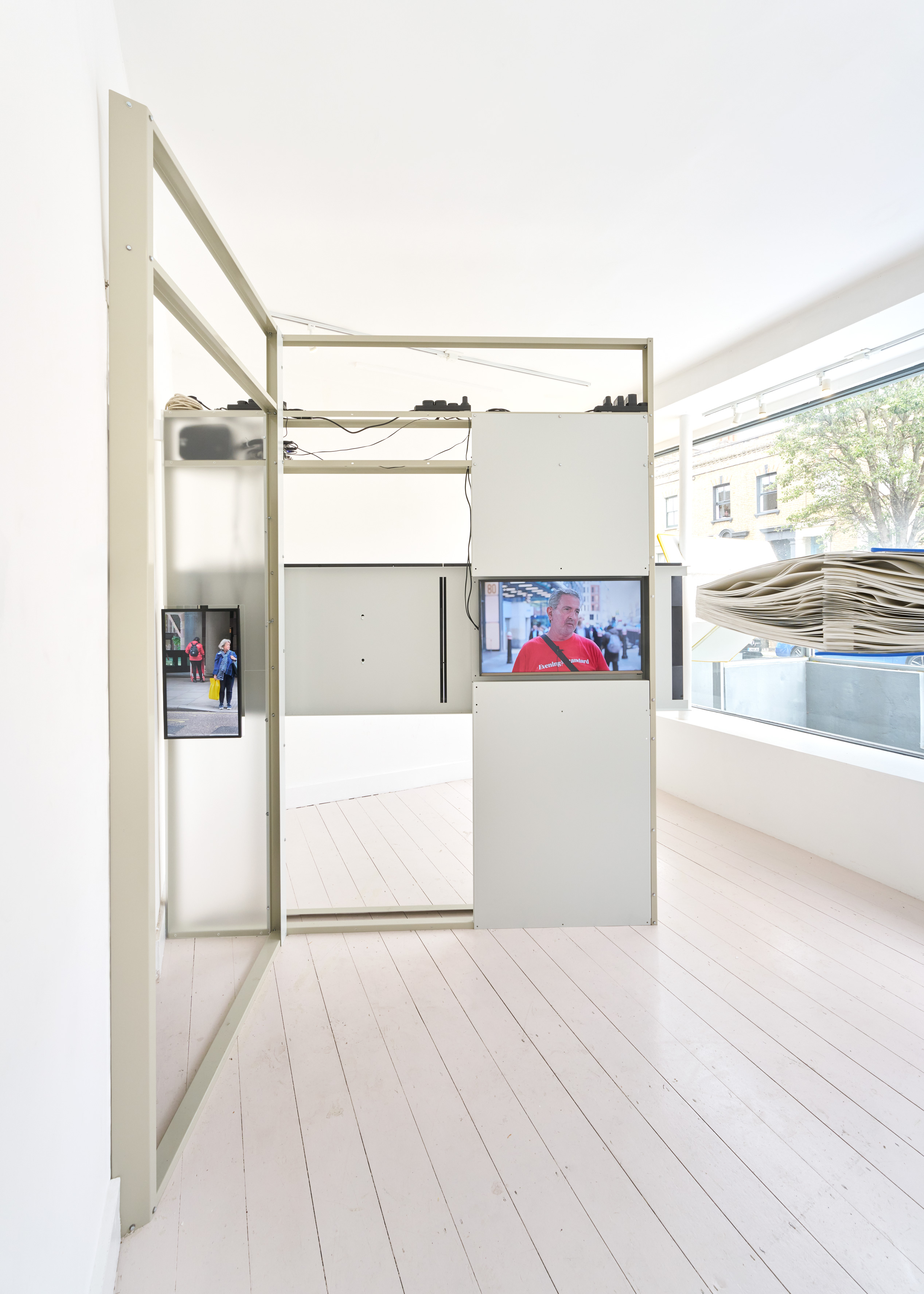

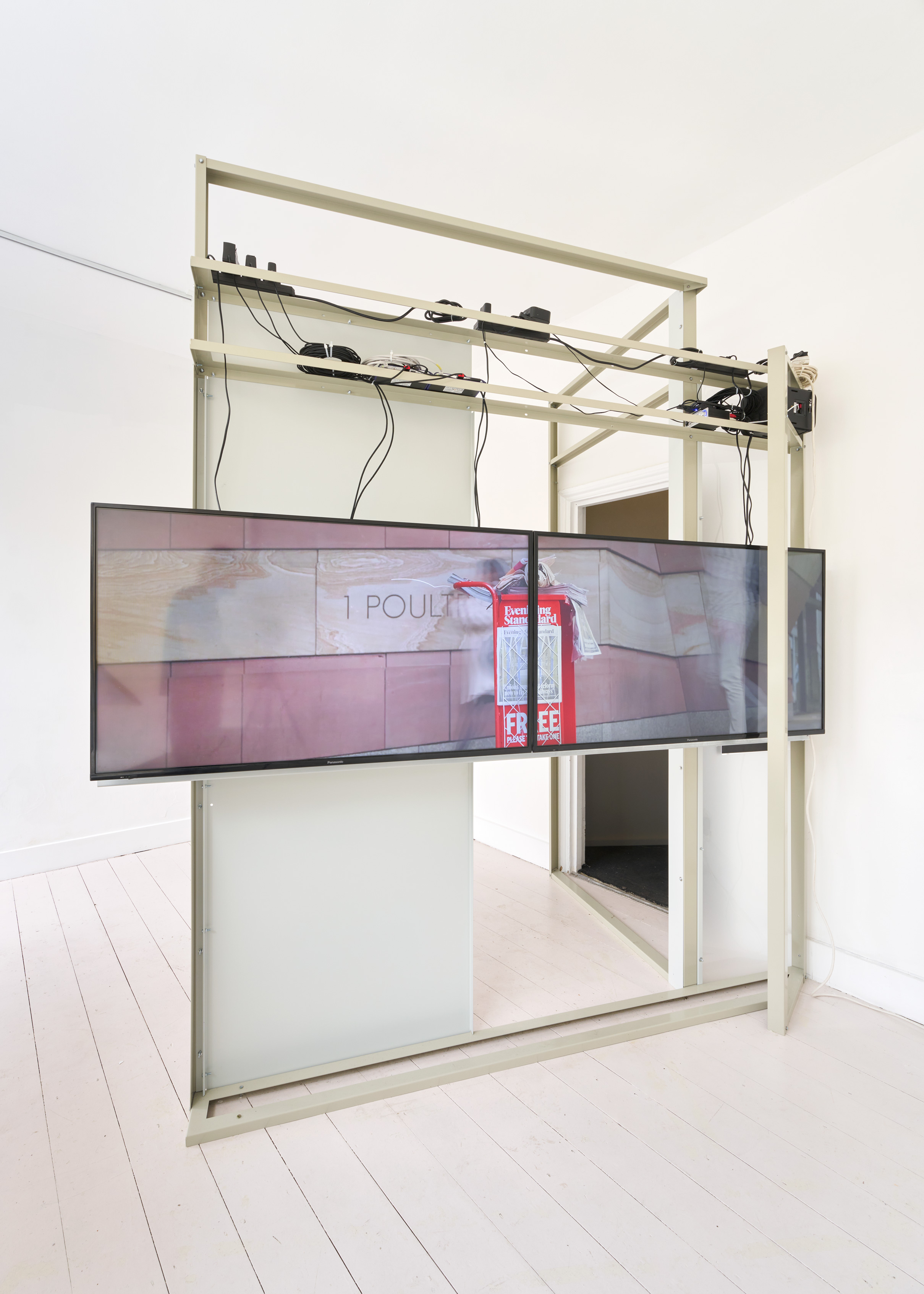

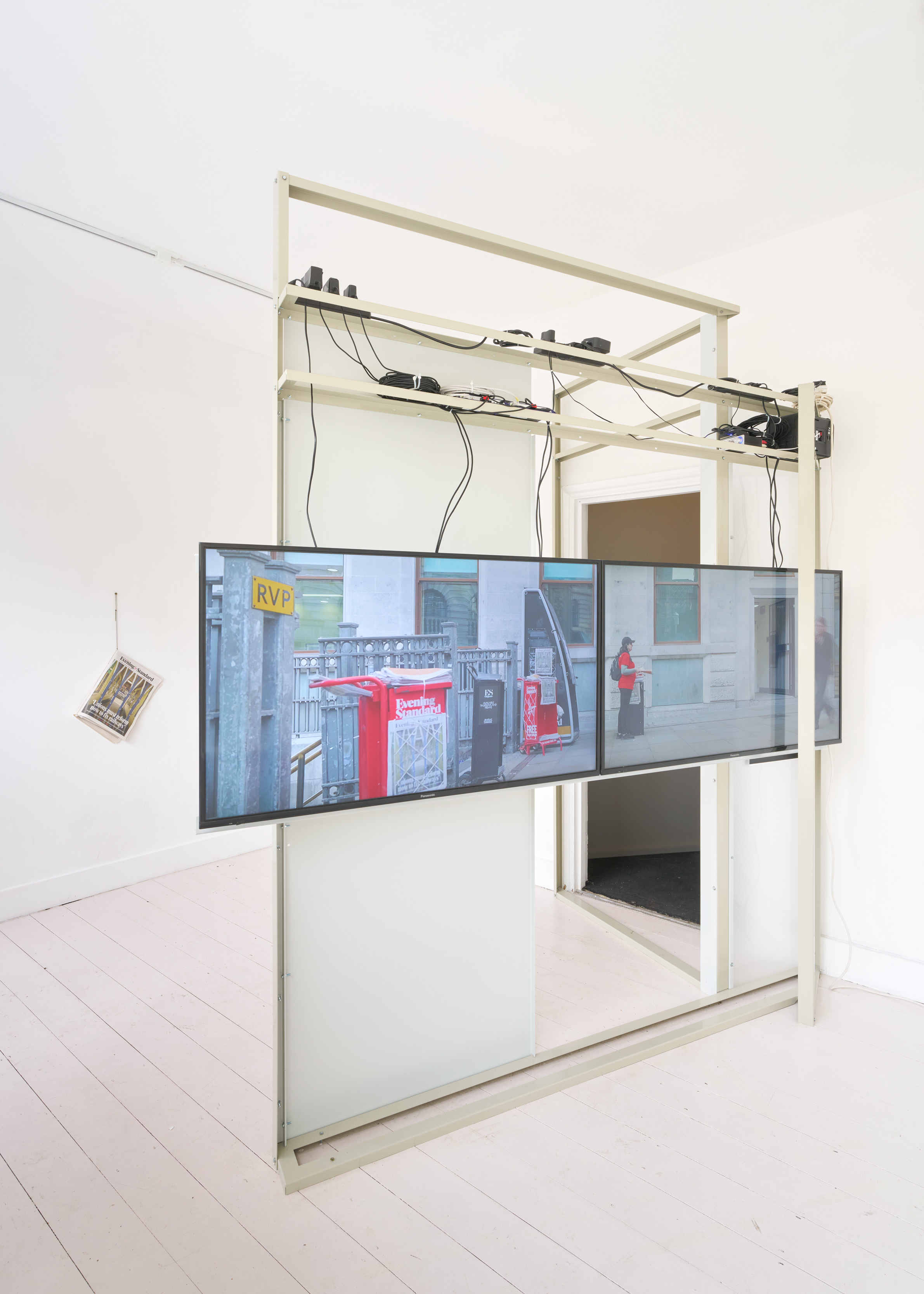
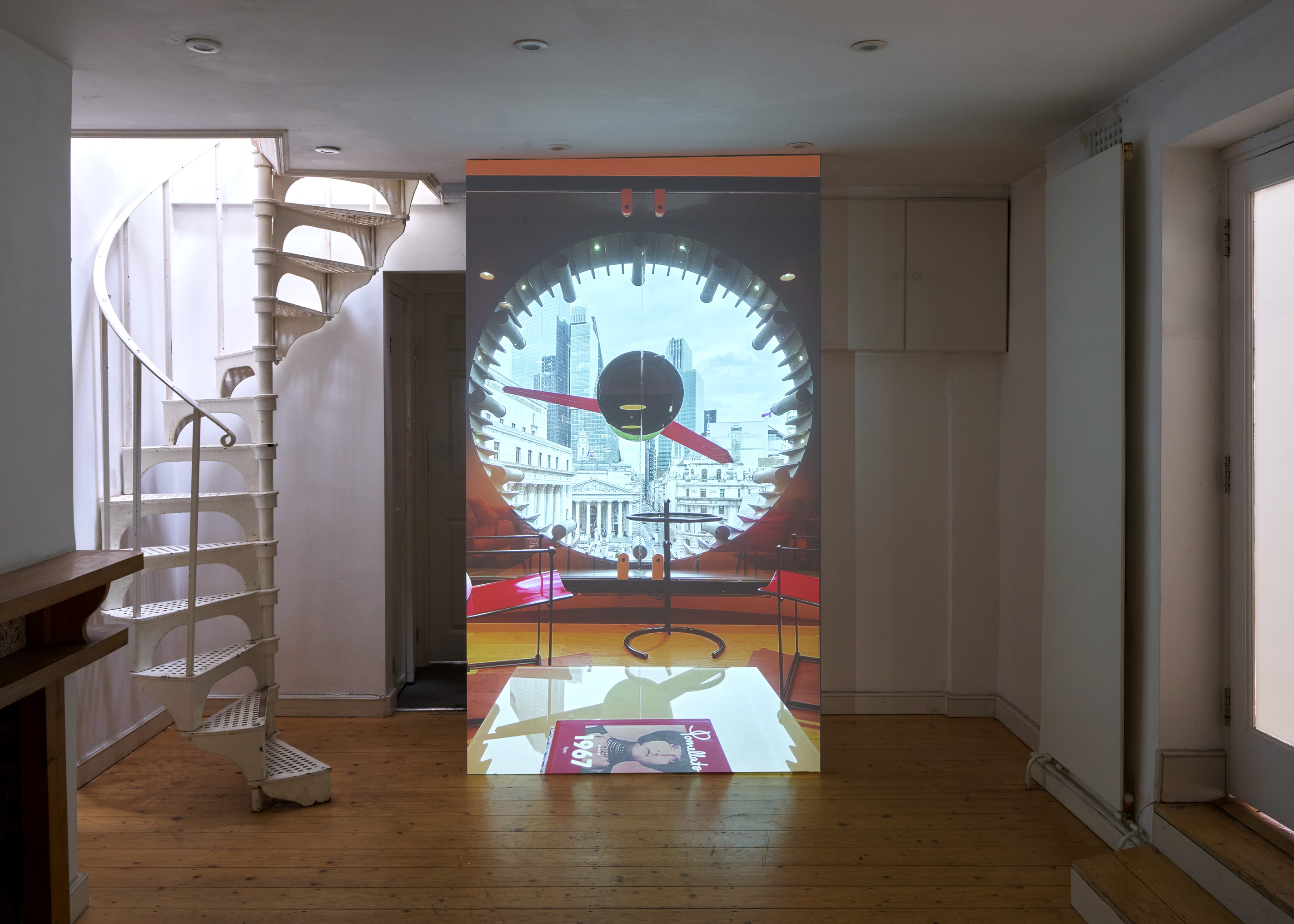
Eloise Hawser, Clock Time, HD video synched to clock, 24 hours. 2025. Photo : Peter Otto
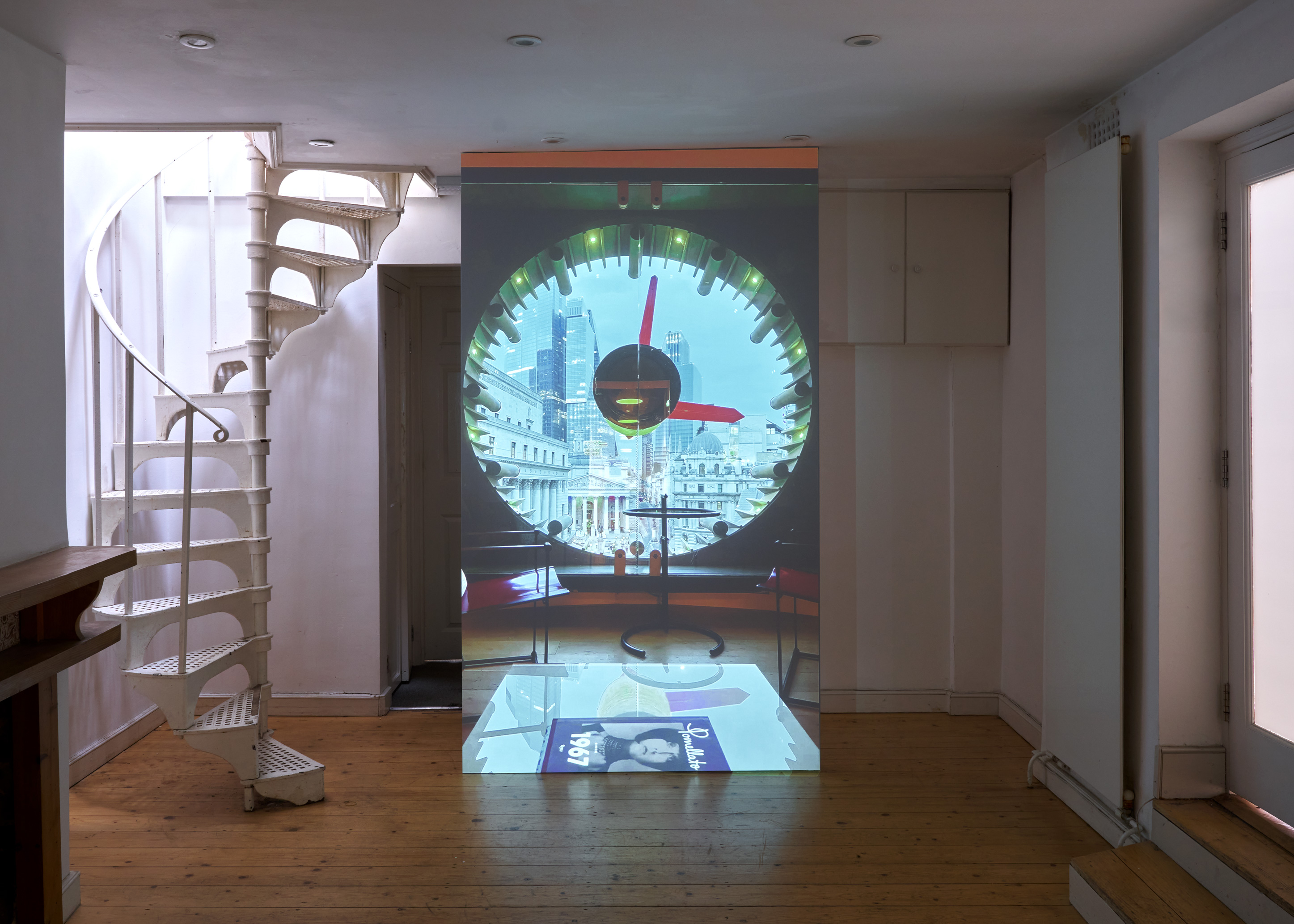

Eloise Hawser, Left to right : Mechanical Coping, Steel, clocks. 2025. 17-09-2024, Found lithographic plate. 2025. Opinions, Steel, newspaper. 2025. Photo : Peter Otto
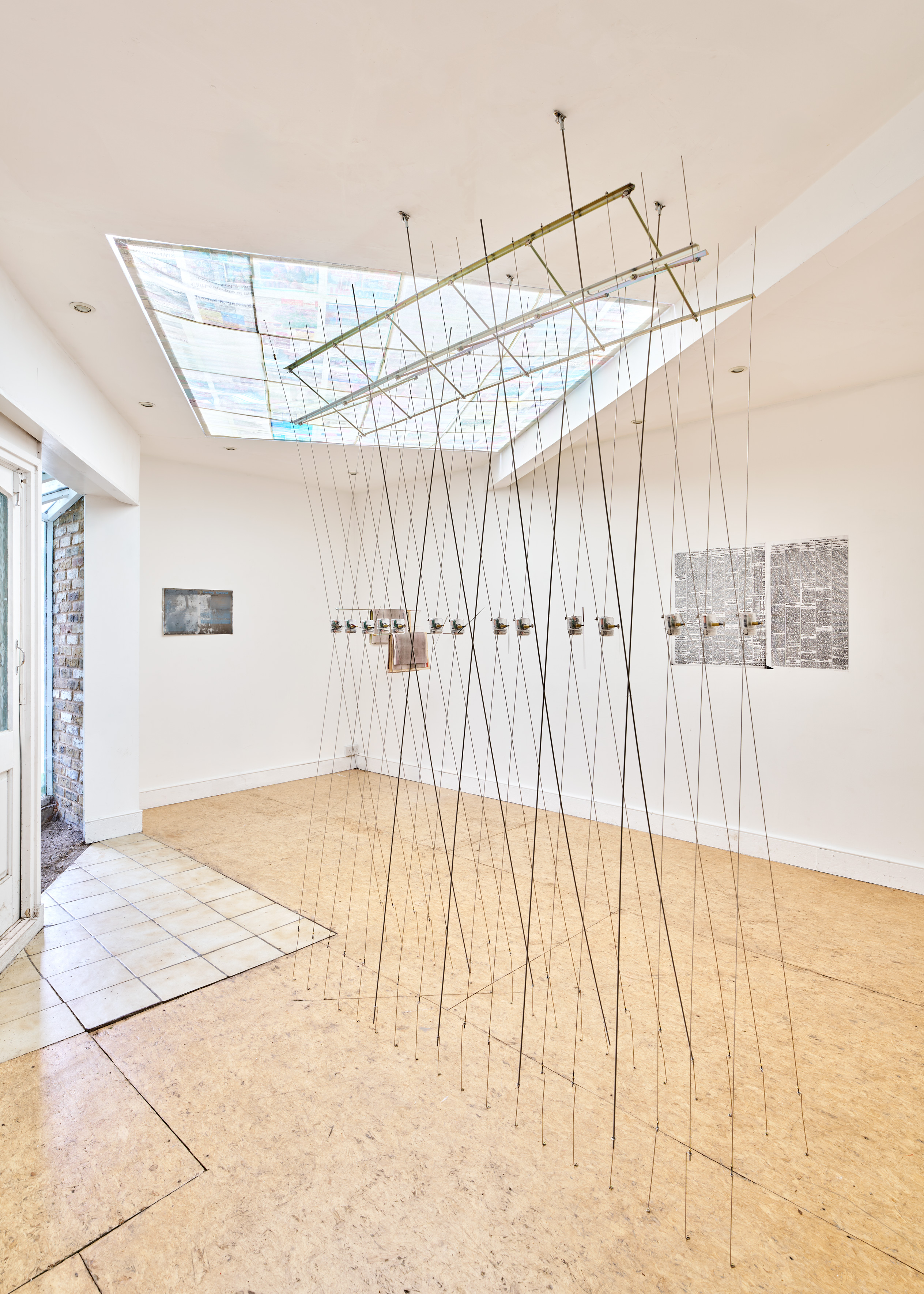
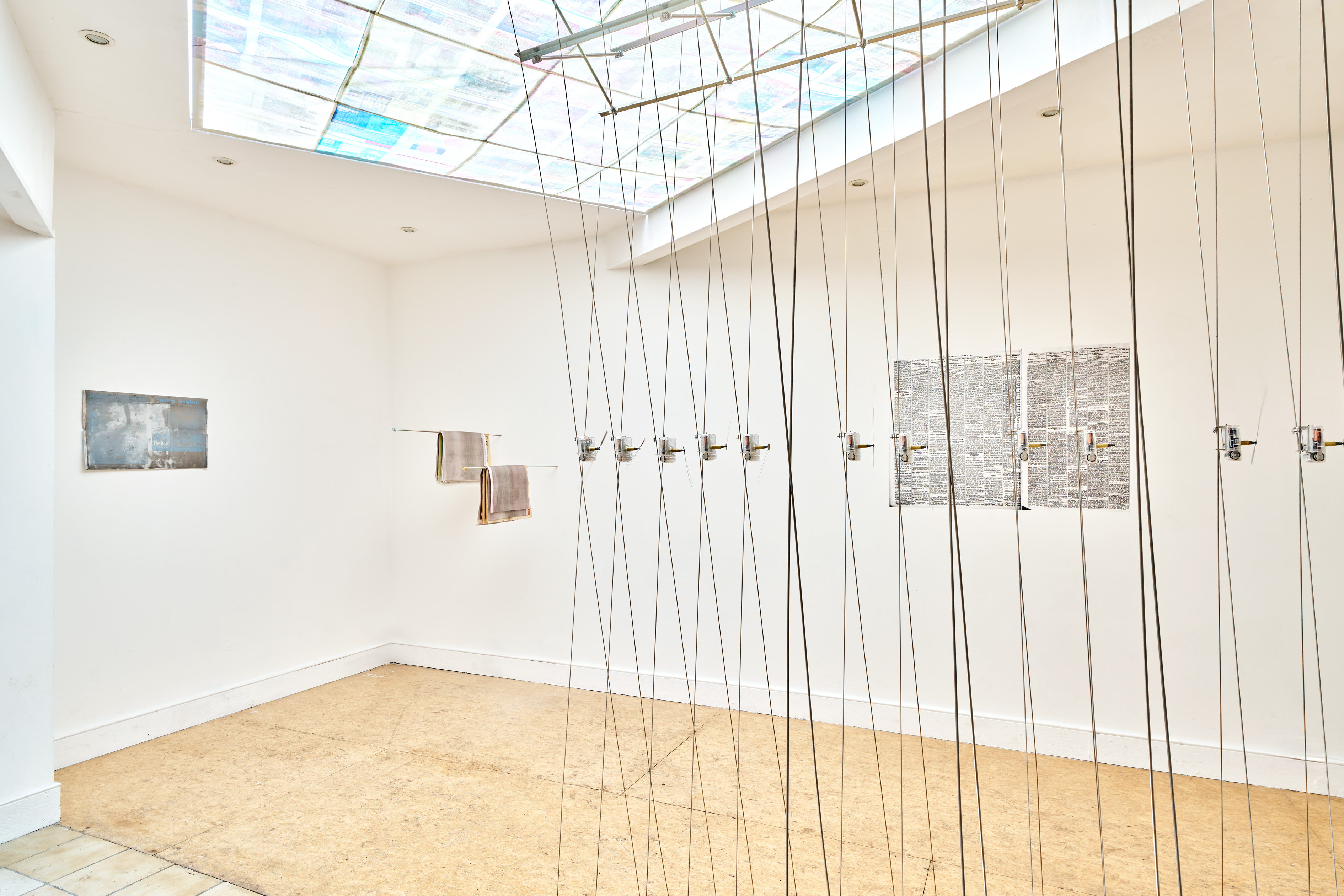
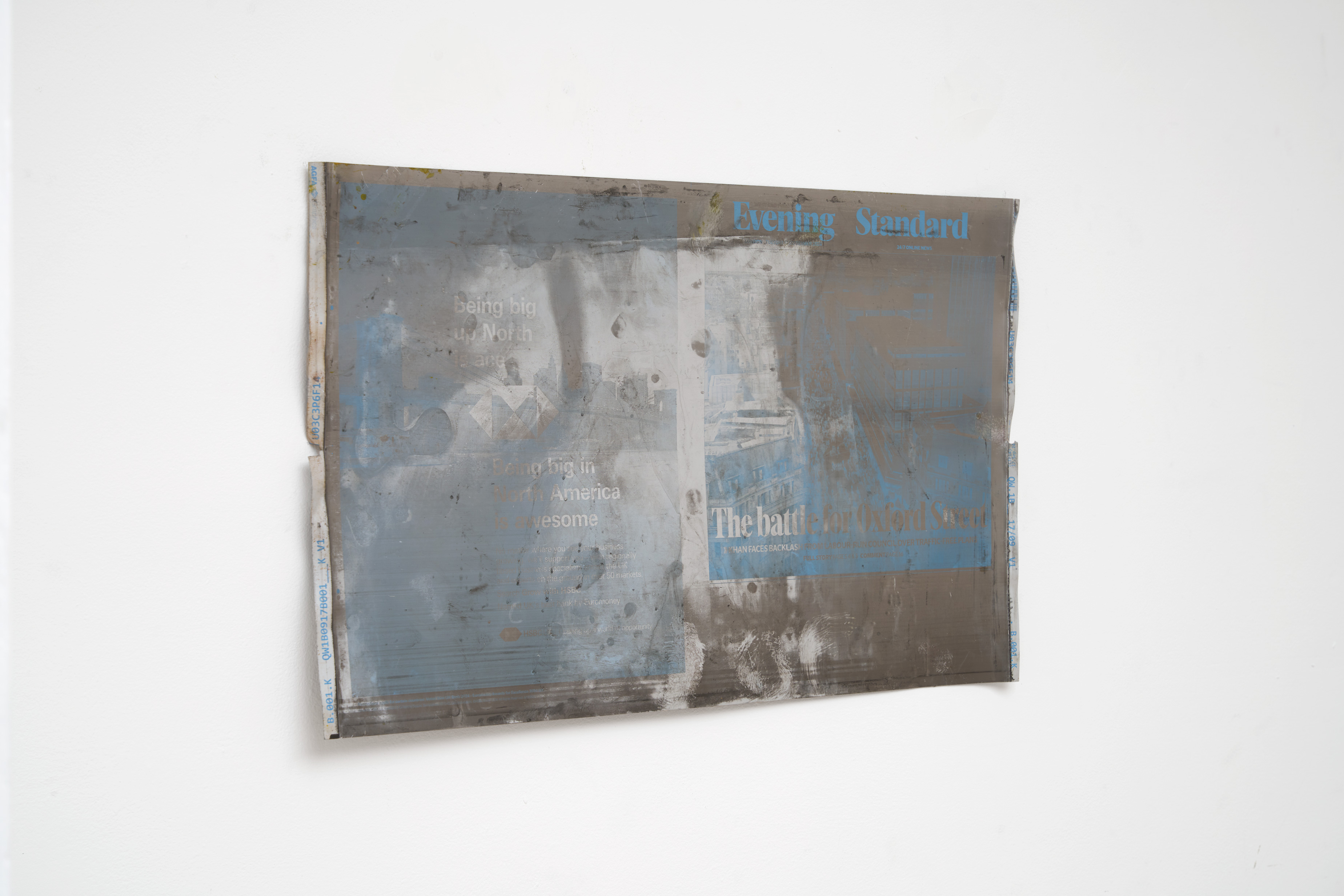
Eloise Hawser, 17-09-2024, Found lithographic plate. 2025. Photo : Peter Otto

Eloise Hawser, Opinions, Steel, newspaper. 2025. Photo : Peter Otto
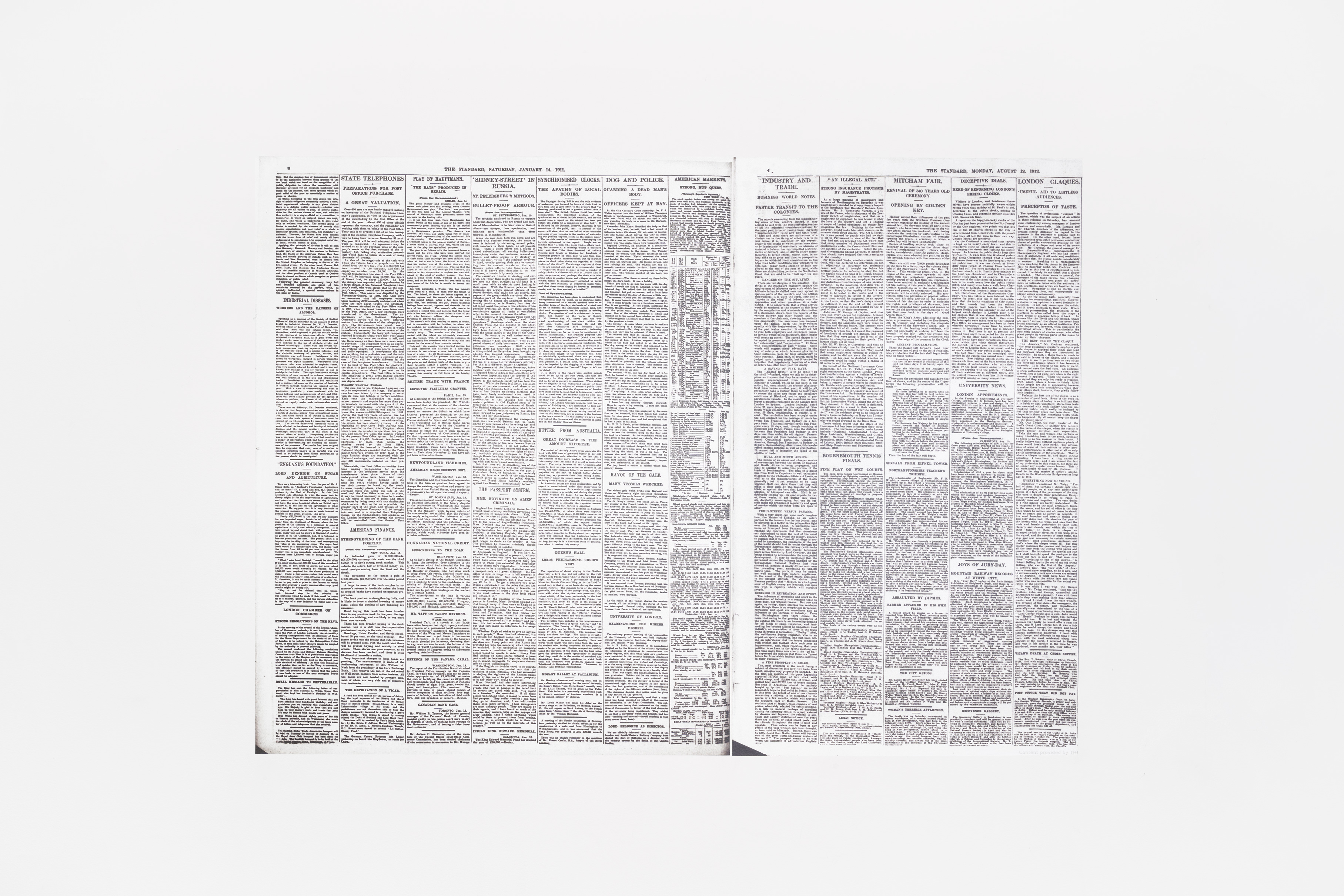
Eloise Hawser, London Claques – Synchronised Clocks/Deceptive Dials, Vinyl. 2025. Photo : Peter Otto

Eloise Hawser, Mechanical Coping, Steel, clocks. 2025. Photos : Peter Otto
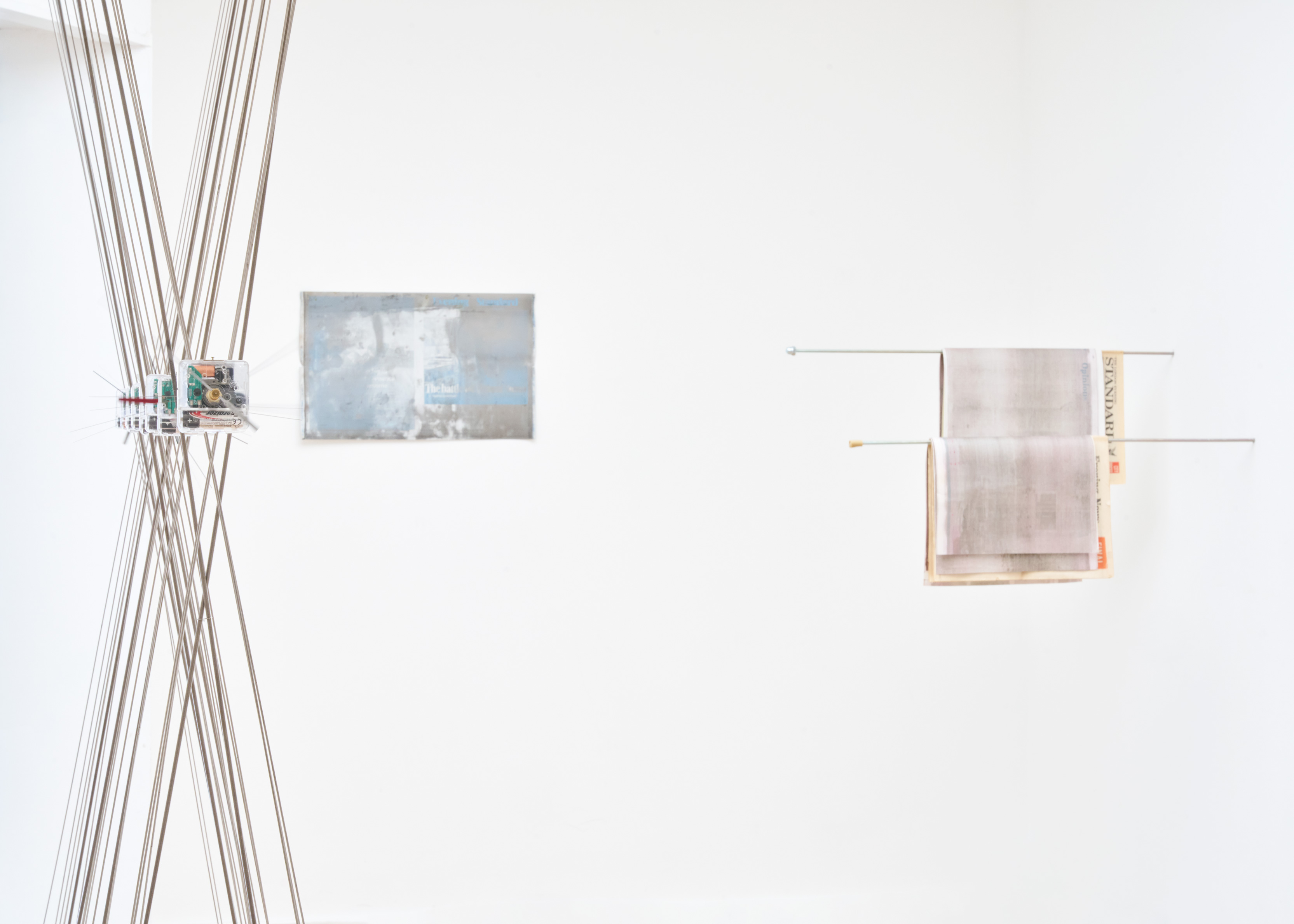
Eloise Hawser, Left to right : Mechanical Coping, Steel, clocks. 2025. 17-09-2024, Found lithographic plate. 2025. Opinions, Steel, newspaper. 2025. Photo : Peter Otto
